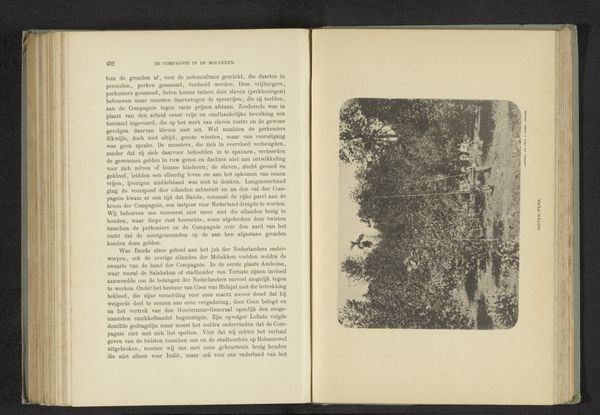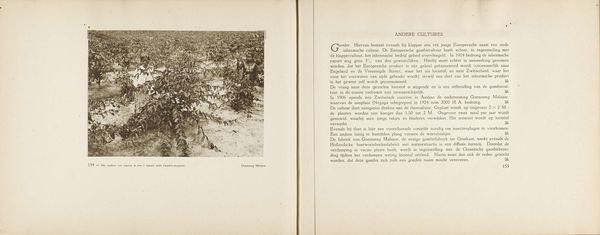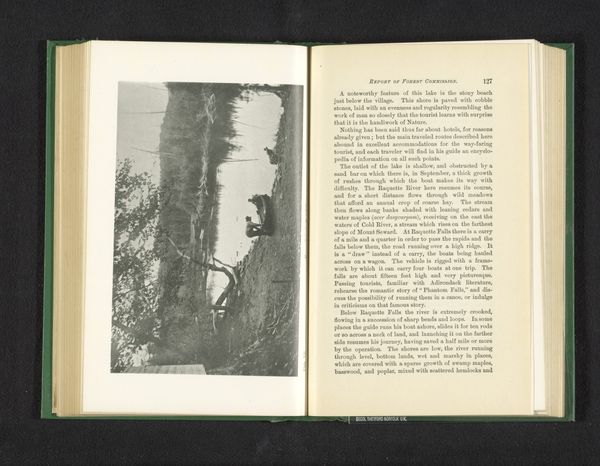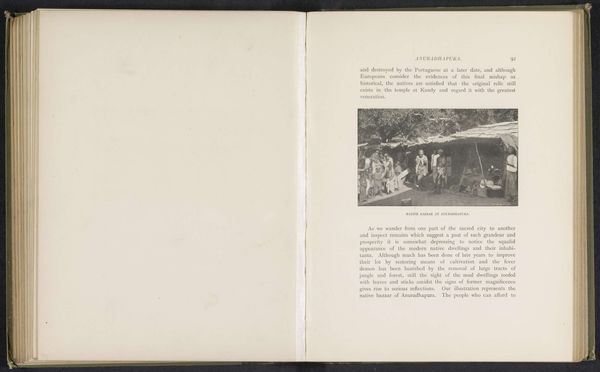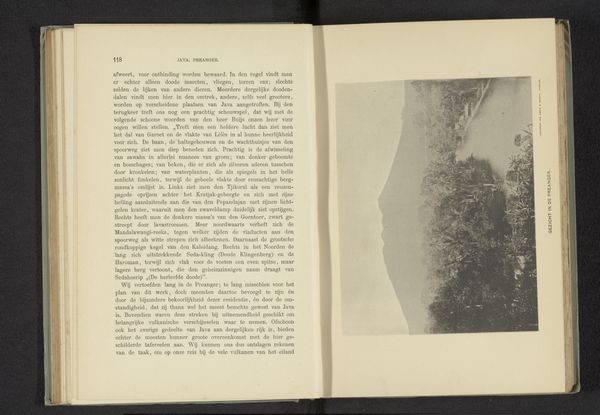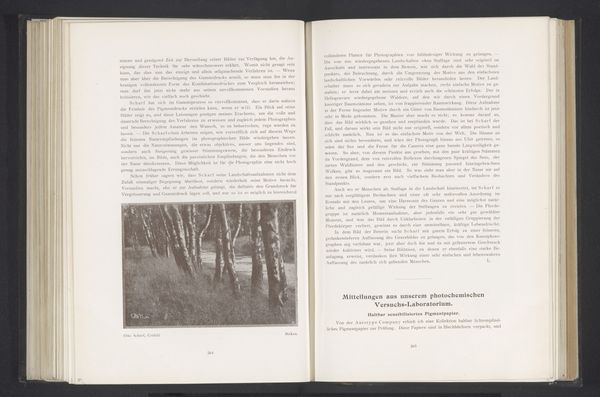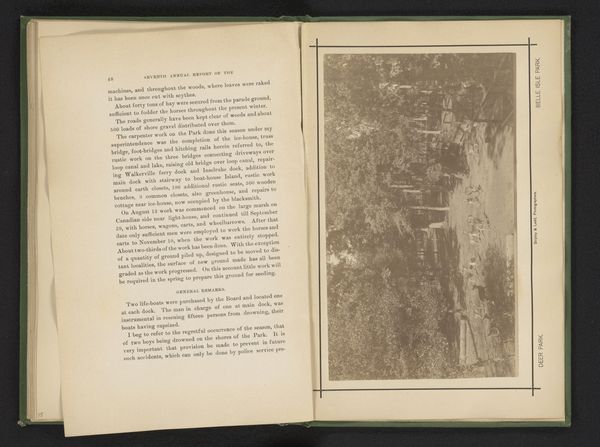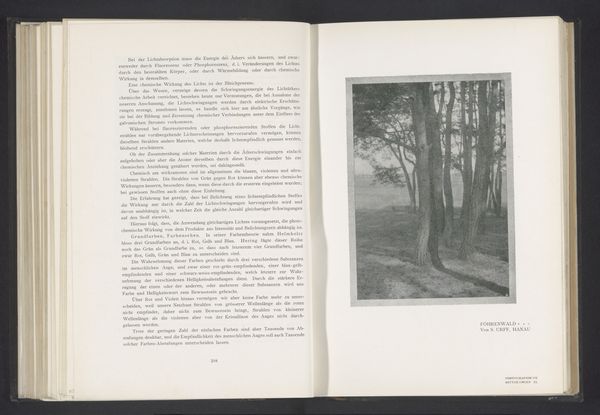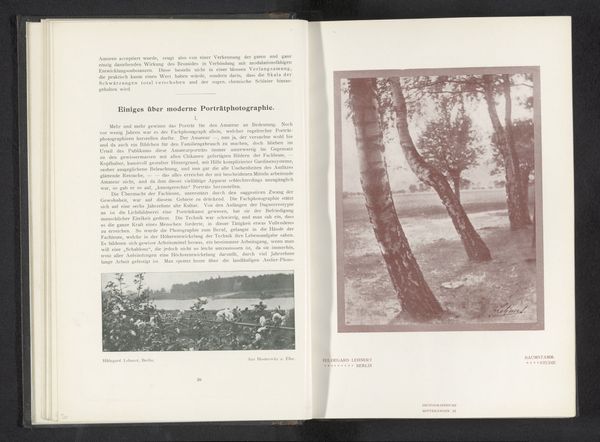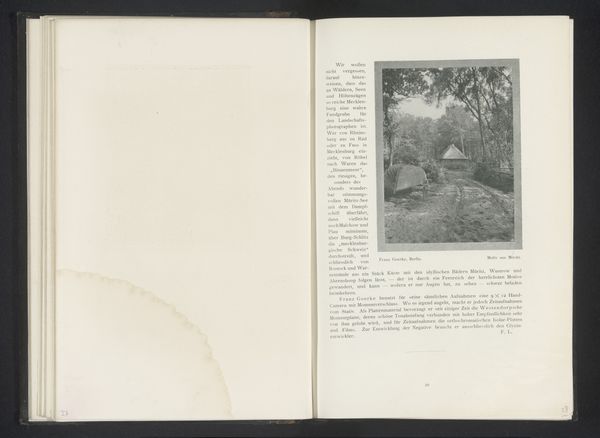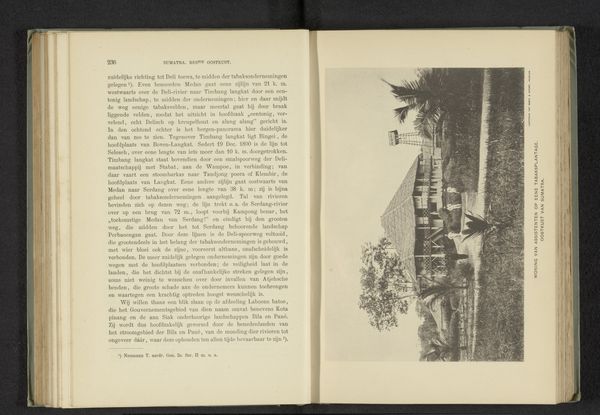
Pagina 34 en 35 van fotoboek van de Algemeene Vereeniging van Rubberplanters ter Oostkust van Sumatra (A.V.R.O.S.) c. 1924 - 1925
0:00
0:00
jwmeyster
Rijksmuseum
print, photography, albumen-print
# print
#
landscape
#
photography
#
forest
#
albumen-print
#
realism
Dimensions: height 240 mm, width 310 mm
Copyright: Rijks Museum: Open Domain
Editor: We're looking at a photograph from an album, specifically pages 34 and 35, titled "Pagina 34 en 35 van fotoboek van de Algemeene Vereeniging van Rubberplanters ter Oostkust van Sumatra (A.V.R.O.S.)," dating from around 1924-1925. It's an albumen print now held at the Rijksmuseum, and it shows what looks like a path cutting through a dense forest. What do you see in this piece? Curator: What immediately strikes me is the relationship between this seemingly "natural" landscape and its connection to a Rubber Planters' Association. It highlights the complex ways photographic images were used to promote and document colonial enterprises. The romantic notion of an untouched forest clashes directly with the economic reality of resource extraction. Who was the intended audience for this photo album and what kind of message do you think it aimed to convey? Editor: Presumably investors or potential colonists. The photo hints at untouched land, full of potential. So the "naturalness" is really a sales pitch. I hadn’t considered that. Curator: Precisely. Notice how the composition emphasizes depth and access, visually "opening up" the forest for exploitation. The cleared path, while ostensibly for traversing the landscape, also symbolizes the imposition of order and control over the natural world. Do you think a modern viewer can truly understand the complexities embedded within this photograph? Editor: I’m not sure we can fully grasp it, but seeing it through that lens is powerful. I definitely see it differently now. Curator: Thinking about this image, then, as a document of colonial history reminds us of the complicated narratives embedded within seemingly straightforward representations of landscape and industrial development. It's a stark visual record of resource extraction and its environmental impact. Editor: I will definitely keep this perspective in mind moving forward. Thank you for shedding light on the photo’s historical context.
Comments
No comments
Be the first to comment and join the conversation on the ultimate creative platform.
